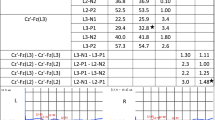Abstract
Spinal somatosensory evoked potential (SSEP) has been employed to monitor the integrity of the spinal cord during surgery. To detect both temporal and spectral changes in SSEP waveforms, an investigation of the application of timefrequency analysis (TFA) techniques was conducted. SSEP signals from 30 scoliosis patients were analysed using different techniques; short time Fourier transform (STFT), Wigner-Ville distribution (WVD), Choi-Williams distribution (CWD), coneshaped distribution (CSD) and adaptive spectrogram (ADS). The time-frequency distributions (TFD) computed using these methods were assessed and compared with each other. WVD, ADS, CSD and CWD showed better resolution than STFT. Comparing normalised peak widths, CSD showed the sharpest peak width (0.13±0.1) in the frequency dimension, and a mean peak width of 0.70±0.12 in the time dimension. Both WVD and CWD produced cross-term interference, distorting the TFA distribution, but this was not seen with CSD and ADS. CSD appeared to give a lower mean peak power bias (10.3%±6.2%) than ADS (41.8%±19.6%). Application of the CSD algorithm showed both good resolution and accurate spectrograms, and is therefore recommended as the most appropriate TFA technique for the analysis of SSEP signals.
Similar content being viewed by others
References
Akay, M. (1998): ‘Time frequency and wavelets in biomedical signal processing’, (IEEE Inc., New York)
Basar-Eroglu, C., Warecka, K., Schurmann, M., andBasar, E. (1993): ‘Visual evoked potentials in multiple sclerosis: frequency response shows reduced alpha amplitude’,Int. J. Neurosci.,73, pp. 235–258
Braun, J. C., Hanley, D. F., andThakor, N. V. (1997): ‘Detection of neurological injury using time-frequency analysis of the somatosensory evoked potential’,Electroenceph. Clin. Neurophysiol.,100, p. 310
Choi, H. I., andWilliams, W. J. (1989): ‘Improved time-frequency representation of multicomponent signals using exponential kernels’,IEEE Trans. Acoust., Speech, Signal proc.,ASSP-37, pp. 862–871
De Weerd, J. P. C., andKap, J. I. (1981): ‘Spectro-temporal representations and time-varying spectra of evoked potentials: a methodological investigation’,Biol. Cybern.,41, pp. 101–117
Fujioka, H., Shimoji, K., Tomita, M., Denda, S., Takada, T., Homma, T., Uchiyama, S., Takahashi, H., Tobita, T., andBaba, H. (1994): ‘Spinal cord potential recordings from the extradural space during scoliosis surgery’,Br. J. Anaesth.,73, pp. 350–356
Hu, Y., Luk, K. D. K., Lu, W. W., Holmes, A., andLeong, J. C. Y. (2000): ‘Prevention of spinal cord injury with Time-Frequency analysis of evoked potentials: an experimental study’, Proceedings of Asia-Pacific Congress on BME, pp. 634–635
Jones, S. J., Edgar, M. A., andRansford, A. O. (1982): ‘Sensory nerve conduction in the human spinal cord: epidural recordings made during scoliosis surgery’,J. Neurol. Neurosurg. Psychiatry,45, pp. 446–451
Loening-Baucke, V., andYamada, T. (1993): ‘Cerebral potentials evoked by rectal distention in humans’,Electroenceph. Clin. Neurophysiol.,88, pp. 447–452
Maccabee, P. J., Hassan, N. F., Cracco, R. Q., andSchiff, J. A. (1986): ‘Short latency somatosensory and spinal evoked potentials: power spectra and comparison between high pass analog and digital filter’,Electroenceph. Clin. Neurophysiol.,88, pp. 177–187
Morgan, N. H., andGevins, A. S. (1986): ‘Wigner distributions of human event-related potentials’,IEEE Trans. Biomed. Eng.,33, pp. 66–70
Nash-CL Jr. (1989): ‘Spinal cord monitoring’,J. Bone Joint Surg. Am.,71, pp. 627–630
Norcia, A. M., Sato, T., Shinn, P., andMertus, I. (1986): ‘Methods for the identification of evoked response components in the frequency and combined time-frequency domains’,Electroenceph. Clin. Neurophysiol.,65, pp. 212–226
Qian, S., andChen, D. (1994). ‘Signal representation via adaptive normalized Gaussian function’,Signal Processing,36, pp. 1–12
Ryan, T. P., andBritt, R. H. (1986): ‘Spinal and cortical somatosensory evoked potential monitoring during corrective spinal surgery with 108 patients’,Spine,11, pp. 352–361
Thakor, N. V., Guo, X. R., Sun, Y. C., andHanley, D. F. (1993): ‘Multiresolution wavelet analysis of evoked potentials’,IEEE Trans. Biomed. Eng.,40, pp. 1085–1094
Zhao, Y., Atlas, L. E., andMarks, R. (1990): ‘The use of cone shaped kernels for generalized time-frequency representations of nonstationary signals’,IEEE Trans. Acoust., Speech, Signal Process.,ASSP-38, pp. 1084–1091
Author information
Authors and Affiliations
Corresponding author
Rights and permissions
About this article
Cite this article
Hu, Y., Luk, K.D.K., Lu, W.W. et al. Comparison of time-frequency distribution techniques for analysis of spinal somatosensory evoked potential. Med. Biol. Eng. Comput. 39, 375–380 (2001). https://doi.org/10.1007/BF02345294
Received:
Accepted:
Issue Date:
DOI: https://doi.org/10.1007/BF02345294




